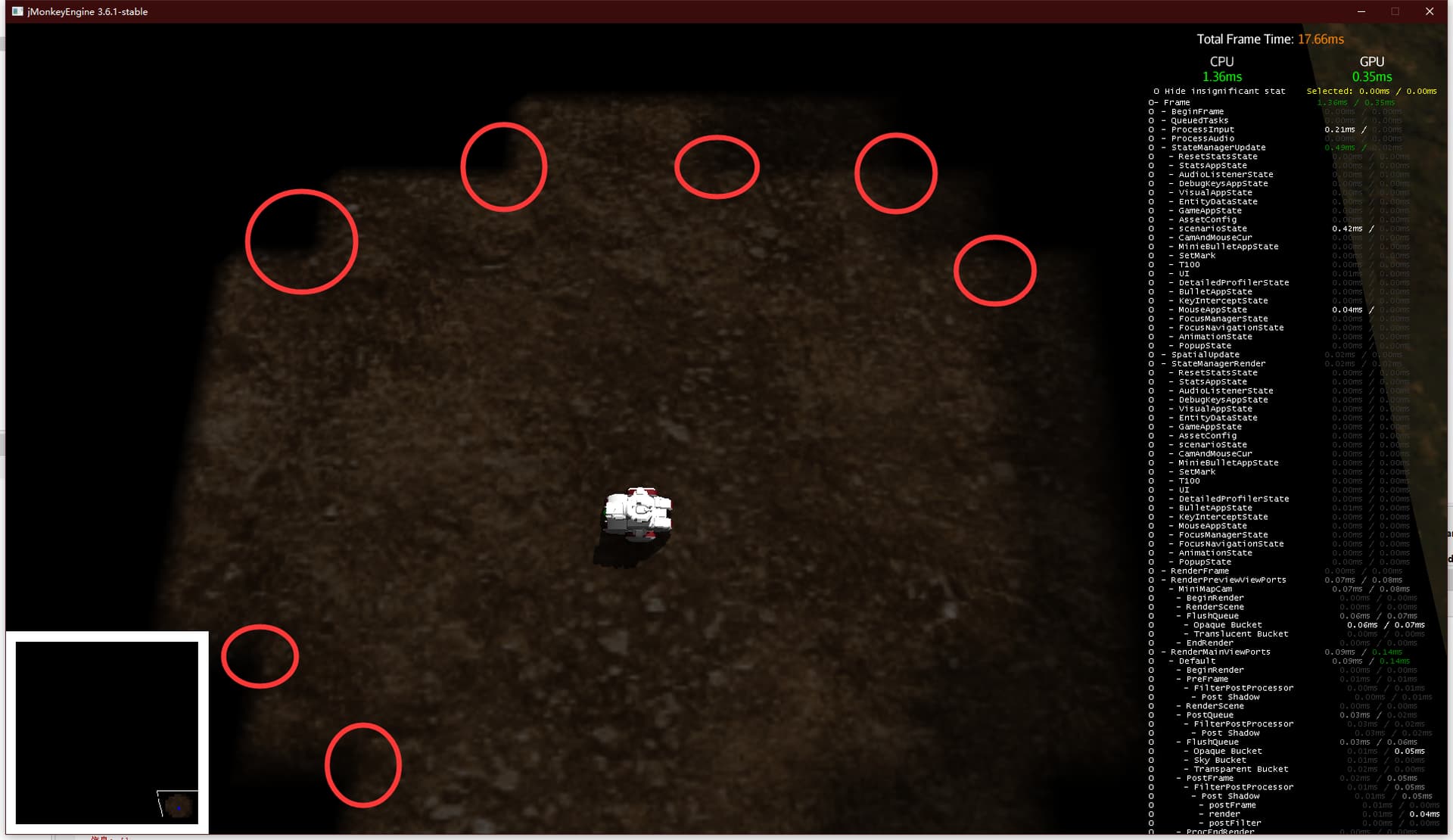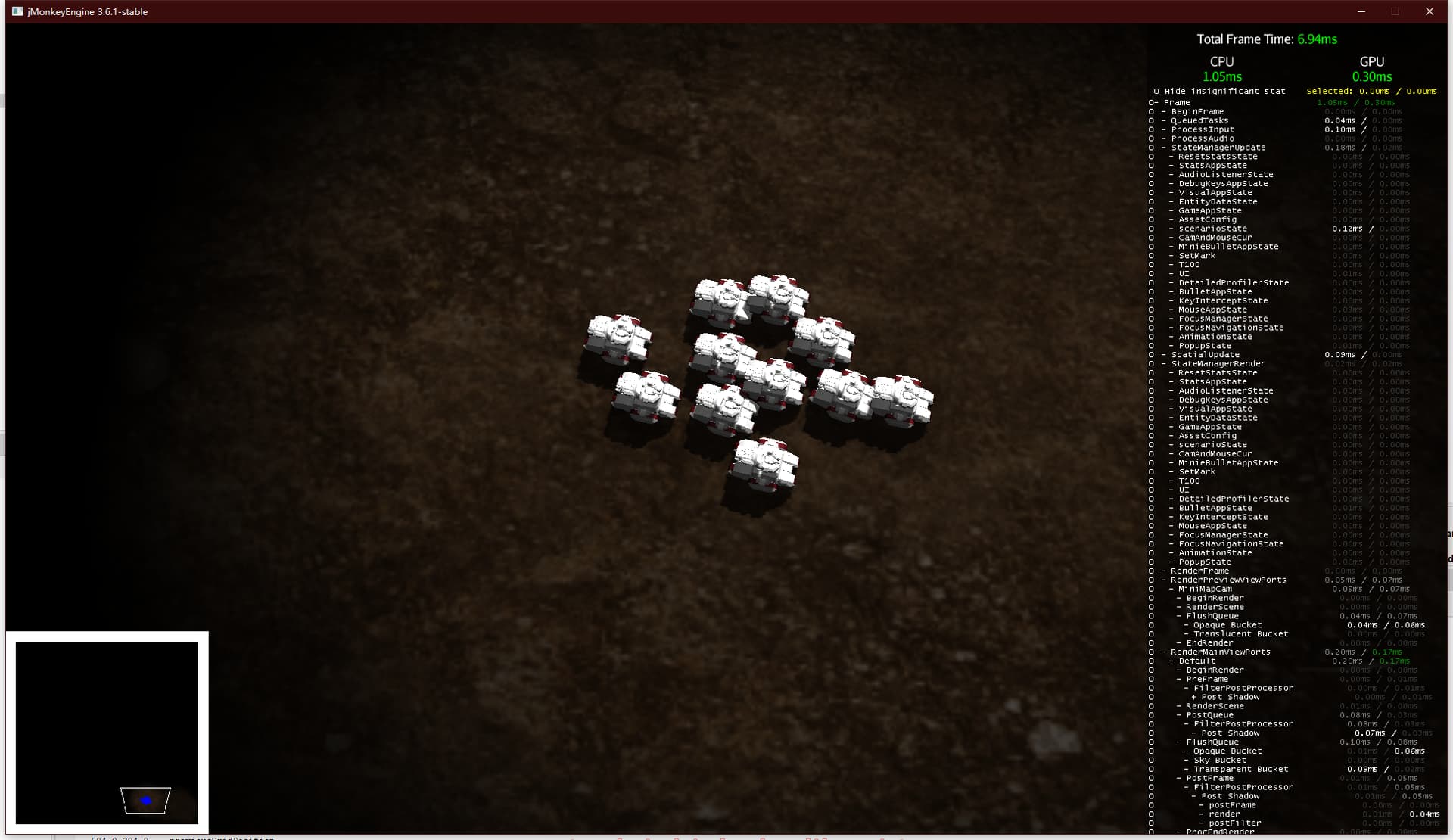it seems that jme has its own fuzzing scheme but I haven’t tried it yet。
The problem I’m currently having is how should I blur the contents of the vertex shader sampler2D in the shader?
Is it possible to get the data of the vertex shader’s sampler2D in the fragment shader?(How do all this in a shader?)
I was hoping to do some blurring to deal with the angles of these meshes
#import "Common/ShaderLib/GLSLCompat.glsllib"
#import "Common/ShaderLib/Parallax.glsllib"
#import "Common/ShaderLib/Optics.glsllib"
#ifndef VERTEX_LIGHTING
#import "Common/ShaderLib/BlinnPhongLighting.glsllib"
#import "Common/ShaderLib/Lighting.glsllib"
#endif
// fog - jayfella
#ifdef USE_FOG
#import "Common/ShaderLib/MaterialFog.glsllib"
varying float fog_distance;
uniform vec4 m_FogColor;
#ifdef FOG_LINEAR
uniform vec2 m_LinearFog;
#endif
#ifdef FOG_EXP
uniform float m_ExpFog;
#endif
#ifdef FOG_EXPSQ
uniform float m_ExpSqFog;
#endif
#endif // end fog
varying vec2 texCoord;
#ifdef SEPARATE_TEXCOORD
varying vec2 texCoord2;
#endif
varying vec3 AmbientSum;
varying vec4 DiffuseSum;
varying vec3 SpecularSum;
#ifndef VERTEX_LIGHTING
uniform vec4 g_LightDirection;
//varying vec3 vPosition;
varying vec3 vViewDir;
varying vec4 vLightDir;
varying vec3 lightVec;
#else
varying vec2 vertexLightValues;
#endif
#ifdef DIFFUSEMAP
uniform sampler2D m_DiffuseMap;
#endif
#ifdef SPECULARMAP
uniform sampler2D m_SpecularMap;
#endif
#ifdef PARALLAXMAP
uniform sampler2D m_ParallaxMap;
#endif
#if (defined(PARALLAXMAP) || (defined(NORMALMAP_PARALLAX) && defined(NORMALMAP))) && !defined(VERTEX_LIGHTING)
uniform float m_ParallaxHeight;
varying vec3 vViewDirPrlx;
#endif
#ifdef LIGHTMAP
uniform sampler2D m_LightMap;
#endif
#ifdef NORMALMAP
uniform sampler2D m_NormalMap;
#else
varying vec3 vNormal;
#endif
#ifdef ALPHAMAP
uniform sampler2D m_AlphaMap;
#endif
#ifdef COLORRAMP
uniform sampler2D m_ColorRamp;
#endif
uniform float m_AlphaDiscardThreshold;
#ifndef VERTEX_LIGHTING
uniform float m_Shininess;
#ifdef USE_REFLECTION
uniform float m_ReflectionPower;
uniform float m_ReflectionIntensity;
varying vec4 refVec;
uniform ENVMAP m_EnvMap;
#endif
#endif
uniform sampler2D m_FowMap; // 待模糊的纹理
varying vec2 texCoord3; // 纹理坐标
const int kernelSize = 4; // 高斯核大小
uniform float kernel[kernelSize]; // 高斯核权重
void main(){
vec2 newTexCoord;
#if (defined(PARALLAXMAP) || (defined(NORMALMAP_PARALLAX) && defined(NORMALMAP))) && !defined(VERTEX_LIGHTING)
#ifdef STEEP_PARALLAX
#ifdef NORMALMAP_PARALLAX
//parallax map is stored in the alpha channel of the normal map
newTexCoord = steepParallaxOffset(m_NormalMap, vViewDirPrlx, texCoord, m_ParallaxHeight);
#else
//parallax map is a texture
newTexCoord = steepParallaxOffset(m_ParallaxMap, vViewDirPrlx, texCoord, m_ParallaxHeight);
#endif
#else
#ifdef NORMALMAP_PARALLAX
//parallax map is stored in the alpha channel of the normal map
newTexCoord = classicParallaxOffset(m_NormalMap, vViewDirPrlx, texCoord, m_ParallaxHeight);
#else
//parallax map is a texture
newTexCoord = classicParallaxOffset(m_ParallaxMap, vViewDirPrlx, texCoord, m_ParallaxHeight);
#endif
#endif
#else
newTexCoord = texCoord;
#endif
#ifdef DIFFUSEMAP
vec4 diffuseColor = texture2D(m_DiffuseMap, newTexCoord);
#else
vec4 diffuseColor = vec4(1.0);
#endif
float alpha = DiffuseSum.a * diffuseColor.a;
#ifdef ALPHAMAP
alpha = alpha * texture2D(m_AlphaMap, newTexCoord).r;
#endif
#ifdef DISCARD_ALPHA
if(alpha < m_AlphaDiscardThreshold){
discard;
}
#endif
// ***********************
// Read from textures
// ***********************
#if defined(NORMALMAP) && !defined(VERTEX_LIGHTING)
vec4 normalHeight = texture2D(m_NormalMap, newTexCoord);
//Note the -2.0 and -1.0. We invert the green channel of the normal map,
//as it's compliant with normal maps generated with blender.
//see http://hub.jmonkeyengine.org/forum/topic/parallax-mapping-fundamental-bug/#post-256898
//for more explanation.
vec3 normal = normalize((normalHeight.xyz * vec3(2.0,-2.0,2.0) - vec3(1.0,-1.0,1.0)));
#ifdef LATC
normal.z = sqrt(1.0 - (normal.x * normal.x) - (normal.y * normal.y));
#endif
#elif !defined(VERTEX_LIGHTING)
vec3 normal = vNormal;
#if !defined(LOW_QUALITY) && !defined(V_TANGENT)
normal = normalize(normal);
#endif
#endif
#ifdef SPECULARMAP
vec4 specularColor = texture2D(m_SpecularMap, newTexCoord);
#else
vec4 specularColor = vec4(1.0);
#endif
#ifdef LIGHTMAP
vec3 lightMapColor;
#ifdef SEPARATE_TEXCOORD
lightMapColor = texture2D(m_LightMap, texCoord2).rgb;
#else
lightMapColor = texture2D(m_LightMap, texCoord).rgb;
#endif
specularColor.rgb *= lightMapColor;
diffuseColor.rgb *= lightMapColor;
#endif
#ifdef VERTEX_LIGHTING
vec2 light = vertexLightValues.xy;
#ifdef COLORRAMP
diffuseColor.rgb *= texture2D(m_ColorRamp, vec2(light.x, 0.0)).rgb;
specularColor.rgb *= texture2D(m_ColorRamp, vec2(light.y, 0.0)).rgb;
light.xy = vec2(1.0);
#endif
gl_FragColor.rgb = AmbientSum * diffuseColor.rgb +
DiffuseSum.rgb * diffuseColor.rgb * vec3(light.x) +
SpecularSum * specularColor.rgb * vec3(light.y);
#else
vec4 lightDir = vLightDir;
lightDir.xyz = normalize(lightDir.xyz);
vec3 viewDir = normalize(vViewDir);
float spotFallOff = 1.0;
#if __VERSION__ >= 110
// allow use of control flow
if(g_LightDirection.w != 0.0){
#endif
spotFallOff = computeSpotFalloff(g_LightDirection, lightVec);
#if __VERSION__ >= 110
if(spotFallOff <= 0.0){
gl_FragColor.rgb = AmbientSum * diffuseColor.rgb;
gl_FragColor.a = alpha;
return;
}
}
#endif
vec2 light = computeLighting(normal, viewDir, lightDir.xyz, lightDir.w * spotFallOff, m_Shininess) ;
#ifdef COLORRAMP
diffuseColor.rgb *= texture2D(m_ColorRamp, vec2(light.x, 0.0)).rgb;
specularColor.rgb *= texture2D(m_ColorRamp, vec2(light.y, 0.0)).rgb;
light.xy = vec2(1.0);
#endif
// Workaround, since it is not possible to modify varying variables
vec4 SpecularSum2 = vec4(SpecularSum, 1.0);
#ifdef USE_REFLECTION
vec4 refColor = Optics_GetEnvColor(m_EnvMap, refVec.xyz);
// Interpolate light specularity toward reflection color
// Multiply result by specular map
specularColor = mix(SpecularSum2 * light.y, refColor, refVec.w) * specularColor;
SpecularSum2 = vec4(1.0);
light.y = 1.0;
#endif
gl_FragColor.rgb = AmbientSum * diffuseColor.rgb +
DiffuseSum.rgb * diffuseColor.rgb * vec3(light.x) +
SpecularSum2.rgb * specularColor.rgb * vec3(light.y);
#endif
// add fog after the lighting because shadows will cause the fog to darken
// which just results in the geometry looking like it's changed color
#ifdef USE_FOG
#ifdef FOG_LINEAR
gl_FragColor = getFogLinear(gl_FragColor, m_FogColor, m_LinearFog.x, m_LinearFog.y, fog_distance);
#endif
#ifdef FOG_EXP
gl_FragColor = getFogExp(gl_FragColor, m_FogColor, m_ExpFog, fog_distance);
#endif
#ifdef FOG_EXPSQ
gl_FragColor = getFogExpSquare(gl_FragColor, m_FogColor, m_ExpSqFog, fog_distance);
#endif
#endif // end fog
gl_FragColor.a = alpha;
vec2 texOffset = 1.0 / textureSize(m_FowMap, 0); // 纹理像素偏移量
vec3 result = vec3(0.0); // 最终模糊结果
// 对纹理进行多次采样并加权平均
for (int i = 0; i < kernelSize; ++i) {
for (int j = 0; j < kernelSize; ++j) {
vec2 offset = vec2(i - (kernelSize / 2), j - (kernelSize / 2)) * texOffset;
result += texture2D(m_FowMap, texCoord3 + offset).rgb * kernel[i] * kernel[j];
}
}
// 输出模糊后的颜色
gl_FragColor = vec4(result, 1.0);
}
I made some changes but it didn’t work


